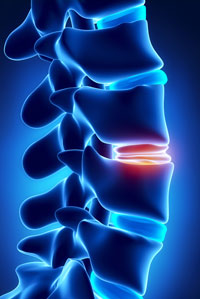
Procedures
Treatment Planning
Neurosurgeons are medical specialists who diagnose and treat the entire nervous system. That means they treat disorders of the brain, spinal cord and spinal column plus the nerves that travel through all parts of the body including hands, legs, arms and face. At UHS Neurosurgery, our New York neurosurgery procedure team has been pushing the boundaries of neurological and neurosurgical care through the introduction of advanced technology and a highly skilled team of staff.
Neurosurgeons have the longest training period of all medical specialties; understanding the intricacies of the entire nervous system, from brain and spine health to the nerves that extend from the face to the toes. Our exemplary team provides the best possible outcomes for our patients. UHS Neurosurgery continues to raise expectations for Central and Southern New York neurosurgery procedures.
Leading the Way in Technological Advances
Surgery may ultimately be necessary to treat your condition. Neurosurgeons at our clinics throughout New York use advanced neurosurgery procedures and technology to guide them through delicate surgical procedures:
Minimally Invasive Surgery
New techniques and instrumentation have been developed to greatly minimize muscle and nerve penetration that may occur during lumbar (low back) surgery, Therefore, there is less pain, less scarring and a quicker healing process.
Minimally Invasive Procedures
Kyphoplasty spine surgery - a minimally invasive surgical procedure used for treating vertebral fractures from osteoporosis. The goals of the procedure are to stop the pain caused by the bone fracture, to stabilize the bone, and to restore some or all of the vertebral body height lost during the compression fracture.
Vertebroplasty
An image-guided, minimally invasive, nonsurgical therapy used to strengthen a broken vertebra (spinal bone) that has been weakened by osteoporosis or, less commonly, cancer. Vertebroplasty can increase the patient’s functional abilities, allow a return to the previous level of activity, and prevent further vertebral collapse. It is usually successful at alleviating the pain caused by a compression fracture. Often performed on an outpatient basis, vertebroplasty is accomplished by injecting an orthopedic cement mixture through a needle into the fractured bone.
Microdiscectomy
In a microdiscectomy or a micro-decompression spine surgery, a small portion of the bone over the nerve root and/or disc material from under the nerve root is removed to relieve neural impingement and provide more room for the nerve to heal. A microdiscectomy spine surgery is typically performed for lumbar herniated disc.
Percutaneous Discectomy
The surgical removal of herniated disc material that presses on a nerve root or the spinal cord. In percutaneous discectomy, the surgeon uses continuous X-ray monitoring to follow movement in the body (fluoroscopy). During fluoroscopy, X-rays are directed at your spine, and the resulting pictures are displayed on a monitor similar to a TV screen. The surgeon will make a small incision in your back and insert instruments that are used to remove all or part of the herniated disc.
Nucleoplasty
The most advanced form of percutaneous discectomy developed to date is DISC Nucleoplasty. Introduced in 2000, DISC Nucleoplasty uses a unique plasma technology called Coblation ® to remove tissue from the center of the disc. During the procedure, the DISC Nucleoplasty SpineWand is introduced through a needle and placed into the center of the disc where a series of channels are created to remove tissue from the nucleus. Tissue removal from the nucleus acts to decompress the disc and relieve the pressure exerted by the disc on the nearby nerve root. As pressure is relieved, pain is reduced, consistent with the clinical results of earlier percutaneous discectomy procedures.
IDET
Intradiscal Electrothermal Annuloplasty (IDET) is a minimally invasive treatment for chronic low back pain that results from certain types of painful degenerative disc disease or contained disc herniation. Successful IDET treatment may allow some patients to experience good or excellent pain relief without having to undergo major spinal surgery for disc removal and spinal fusion, or disc replacement.
X STOP IPD
X STOP IPD offers immediate and long-term relief of symptoms without the removal of any bone or soft tissue, without general anesthesia, lengthy postoperative recovery, risk of significant complications, or significant costs. The unique design of the X STOP allows it to be easily and quickly inserted, yet ensures it will remain safely and permanently in place without attachment to the bone or ligaments. The X STOP is placed between the spinous processes of the symptomatic disc levels. This distracts the space and maintains it in a slightly flexed position, allowing patients to resume their normal posture rather than flex the entire spine to gain relief of symptoms. The X STOP IPD System incorporates the normal anatomy of the spine into a dynamic structure that prevents extension of the stenotic segment, preventing nerve root impingement.
The StealthStation® Treatment Guidance System
The StealthStation® Treatment Guidance System provides greater accuracy, a smaller surgical incision, a shorter procedure time, advanced procedure planning and a shortened patient stay, creating better patient treatment and care. The system is used in over 500 medical centers throughout the world. The entire image-guided surgery process can easily be correlated or compared to location and directional tracking systems used for cars and ships today. The image-guided surgery system camera performs much like the satellite that detects signals from vehicles that are quipped with special tracking devices. As the vehicle moves, the satellite calculates the position and transfers the information to the vehicle computer. This shows the direction the vehicle is moving, and when programmed, will give specific directions as to how to proceed.
Gamma Knife – Often referred to as “surgery without a scalpel” because it involves no incision, minimal pain and is a greatly reduced risk to the patient. Gamma Knife offers new hope to patients with inoperable conditions such as arterio-venous malformations and brain tumors. Advantages of the Gamma Knife include tremendous technical accuracy, and no surgical risks such as infection because no incision is made. The patient is lightly sedated but awake throughout the procedure, and therefore has little discomfort. Hospitalization is minimal- usually overnight, and recovery lasts no more than two to three days.
The Gamma Knife is primarily used for neoplastic and vascular disorders, but it also offers new hope for other disorders such as: Anteriovenous malformations, meningiomas, acoustic tumors, vascular formations, deep-seated intracranial tumors, metatastic brain tumors, pituitary tumors, and partially resected tumors.
IMRT
High Resolution Intensity Modulated Radiation Therapy has the ability to treat irregularly shaped lesions in the direct vicinity of critical structures with dose distributions that otherwise would not be obtainable. The advantages of High Resolution IMRT include; the highest level of patient comfort with less side effects from radiation, superior dose distributions with simultaneous improvements in dose conformation, and critical structure avoidance and target does homogeneity.
We conquer pain with 10,000 hertz
HF10 spinal cord stimulation is now available in the Southern Tier. Doctors at UHS are using the latest in high-frequency electrical stimulation to treat chronic back and leg pain. The addition of HF10 therapy at UHS Wilson Medical Center makes UHS one of the largest and most comprehensive neuromodulation centers in the country.
HF stands for high-frequency and 10 stands for 10,000 hertz of current. The therapy uses an electrical implant that sends pain-relieving signals to the spinal cord. It has been shown to block pain significantly better than even other forms of traditional spinal stimulation. A Food & Drug Administration study has shown that patients treated with an HF10 implant have better pain relief, improved function and higher satisfaction.
Most patients report significantly less pain, increased freedom and a greater ability to return to everyday activities. UHS Wilson is one of a very few medical centers where state-of-the-art spinal stimulation services are offered by four providers - three neurosurgeons and an orthopedic spine surgeon.
UHS News
-
 Baby born on Christmas brings holiday joy to parentsDecember 25, 2025
Baby born on Christmas brings holiday joy to parentsDecember 25, 2025At UHS Wilson Medical Center, parents Elizabeth Morales and Jose Alvaro Asensio received an extra special Christmas gift this year, welcoming their baby girl on Christmas morning. Aylani Larissa Asensio arrived at 6:48 a.m., at 20 inches long and weighing 7 pounds and 1.9 ounces.
-
NICU babies enjoy a heartwarming visit from SantaDecember 24, 2025
The UHS Neonatal Intensive Care Unit (NICU) team at UHS Wilson Medical Center turned the holidays into a heartwarming celebration for families welcoming their newest members.
-
 Stop the spread of germs with proper handwashingDecember 24, 2025
Stop the spread of germs with proper handwashingDecember 24, 2025Clean hands can help stop germs from spreading from one person to another and in our communities—including your home, workplace, schools, and childcare facilities.
-
 Important reminders for shoveling snow safelyDecember 23, 2025
Important reminders for shoveling snow safelyDecember 23, 2025Shoveling snow is hard work and can lead to a number of health risks for many people, from back injuries to heart attacks.


